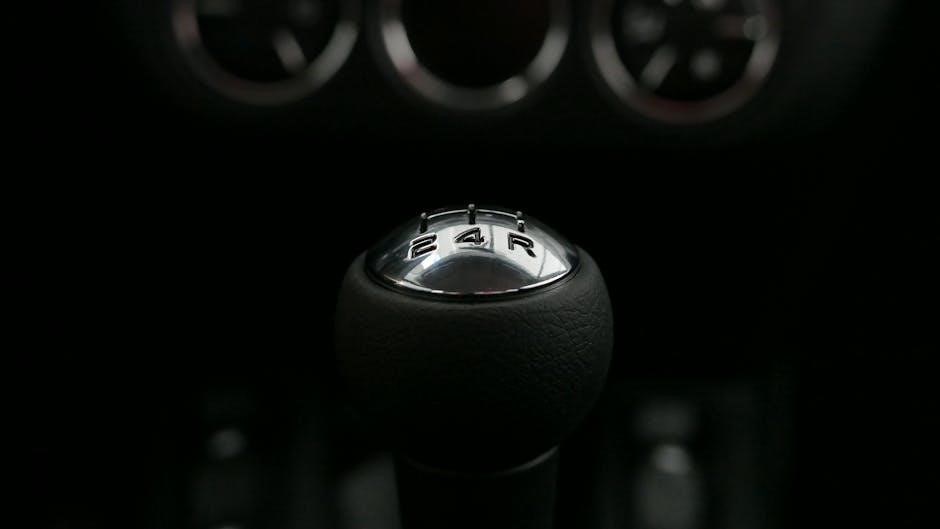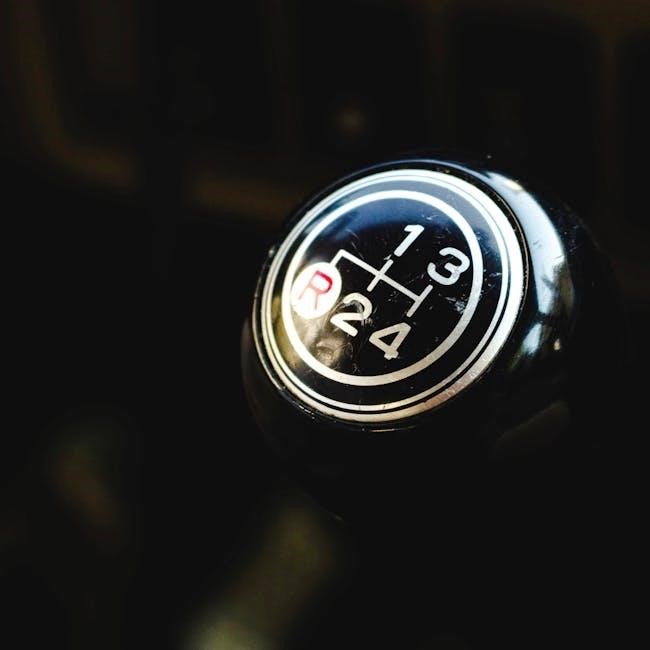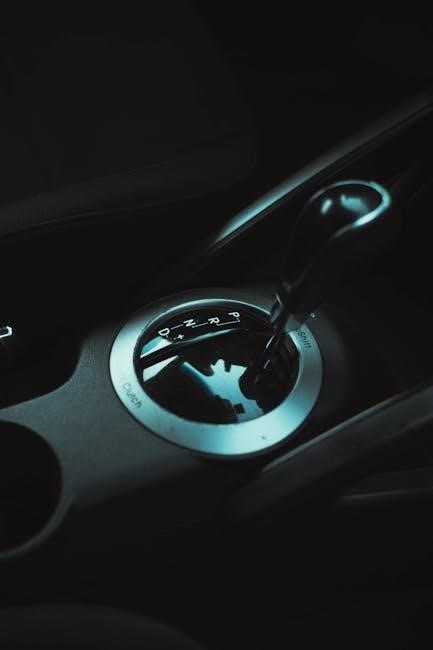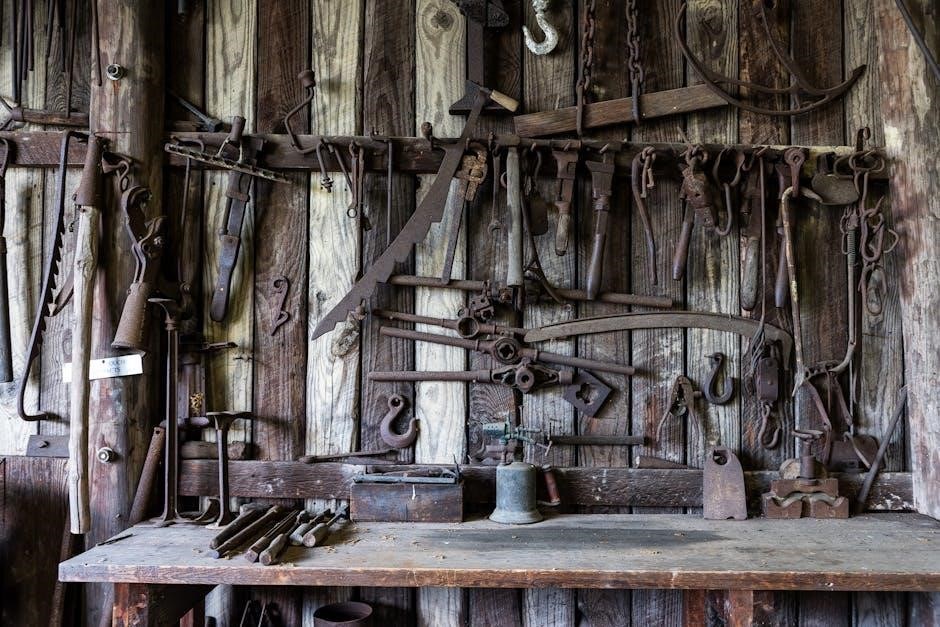
manual transmission issues
Manual Transmission Issues: A Comprehensive Guide
Manual transmissions, while generally reliable, can develop issues due to high mileage, abuse, or lack of maintenance. This guide helps identify common problems, from shifting difficulties to unusual noises, aiding in diagnosis and potential DIY repairs.
Manual transmissions offer a unique driving experience, but like any mechanical system, they are prone to issues. While generally robust, factors such as high mileage, abusive driving habits, or insufficient maintenance can lead to problems. These issues often stem from related components like the clutch assembly, shift linkage, or driveline, rather than the transmission itself. Recognizing the telltale signs of a failing manual transmission is crucial for timely intervention and preventing further damage. This guide will delve into common symptoms, potential causes, and basic troubleshooting steps to keep your manual transmission running smoothly and efficiently.

Common Symptoms of Manual Transmission Issues
Recognizing the signs of transmission trouble early on can save you money and prevent major damage. Keep an eye out for these common symptoms indicating potential problems.
Difficulty Shifting Gears
Encountering difficulty shifting gears is a common symptom indicating potential issues within the manual transmission system. This can manifest as a struggle to move the shift lever between gears, requiring excessive force or resulting in a stiff, unresponsive feel. The problem may be present when shifting into all gears, or only specific ones.
Possible causes could include a loose linkage, worn shift cables or worn bearings. A worn out shift fork can also make it hard to shift gears. If the issue persists even with the engine off, the linkage should be inspected closely for binding or misalignment.
Grinding Noises During Shifting
A grinding noise during shifting is a concerning symptom often indicative of internal damage within the transmission. This noise, typically a harsh, metallic sound, usually occurs as you attempt to engage a gear. The sound may come from clashing gears or worn components. The clashing may happen because of worn or damaged gears, linkage problems due to wear or need for adjustment.
Potential culprits include worn or damaged gears, a failing synchronizer, or issues within the shift linkage. If the grinding is more pronounced when downshifting, the synchronizer may be the main reason. A dragging clutch can also produce this noise.
Transmission Jumping Out of Gear
A manual transmission that jumps out of gear while driving presents a significant safety hazard and signals a mechanical problem. This issue occurs when the transmission disengages from the selected gear without driver intervention. This seems to be a common problem on worn-out transmissions. In this case, the transmission jumps out of gear. Several factors can contribute to this, including worn or damaged gears within the transmission itself, especially the gear teeth or synchronizers.
Worn shift fork also can make your transmission to jump out of gear. Additional causes can be loose clutch housing bolts, or transmission misalignment.
Unusual Noises (Whining, Buzzing, or Clunking)
Unusual noises emanating from a manual transmission often indicate underlying mechanical problems that require attention. Whining sounds are frequently associated with worn bearings or insufficient lubrication within the transmission. A buzzing sound could indicate a problem with the seal on your transmission. It’s yet another symptom of a possible transmission fluid leak or low fluid levels.
Clunking noises may suggest loose components, damaged gears, or issues within the differential case. Identifying the specific type and origin of the noise is essential for accurate diagnosis. Remember that a bad CV joint can produce noises when you accelerate or make a turn.
Fluid Leaks
Fluid leaks from a manual transmission can lead to serious problems if left unaddressed. Low fluid levels can cause overheating, slipping gears, shifting problems and eventual internal damage. Common leak points include gaskets and seals. Reduced lubrication due to leaks can accelerate wear and tear on internal components, potentially causing significant damage.
Identifying and addressing fluid leaks promptly is crucial to maintaining the health and performance of the transmission. Check the transmission case and oil level. If it leaks after you just replaced the oil, you may have put too much.

Causes of Manual Transmission Problems
Manual transmission problems often stem from worn clutch components, shift linkage issues, low or contaminated fluid, and damaged gears or synchronizers. Addressing these root causes is essential for effective repair and long-term transmission health.
Worn Clutch Components
Worn clutch components are a frequent culprit behind manual transmission problems. The clutch disc, pressure plate, and throw-out bearing endure constant friction, leading to wear over time. A worn clutch disc can cause slippage, resulting in a loss of power transfer and difficulty accelerating. A failing pressure plate may cause the clutch to not fully engage or disengage, leading to shifting problems. A noisy or rough throw-out bearing can indicate impending failure. Regular clutch maintenance and timely replacement of worn components can help prevent more serious transmission issues down the road, ensuring smooth and reliable operation.
Shift Linkage Problems
Shift linkage problems can significantly impact the ability to smoothly and accurately change gears in a manual transmission. Issues can arise from loose, worn, or misaligned components within the linkage system. This includes shift cables, rods, and levers that connect the gear shift to the transmission. Symptoms of shift linkage problems include difficulty selecting gears, sloppy or vague shifter feel, and the transmission jumping out of gear. Inspecting and lubricating the linkage, tightening loose connections, and replacing worn components are crucial steps in resolving these issues. Proper adjustment and maintenance of the shift linkage ensure precise and reliable gear changes.
Low or Contaminated Transmission Fluid
Low or contaminated transmission fluid is a common cause of manual transmission problems. Transmission fluid lubricates the gears and other internal components, preventing wear and dissipating heat. When the fluid level is low, or the fluid becomes contaminated with dirt, metal shavings, or water, it can lead to several issues. These issues include difficulty shifting gears, grinding noises, overheating, and premature wear of transmission components. Regularly checking the fluid level and condition, and performing fluid changes at recommended intervals, are essential for maintaining the health of the transmission. Addressing leaks promptly and using the correct type of fluid are also crucial preventative measures.
Damaged Gears or Synchronizers
Damaged gears or synchronizers are significant contributors to manual transmission problems. Gears can suffer from wear, chipping, or breakage due to high stress or inadequate lubrication. Synchronizers, responsible for matching gear speeds during shifting, can wear down, causing grinding noises and difficulty engaging gears. These issues often manifest as grinding during shifts, popping out of gear, or an inability to shift into certain gears. Addressing these problems usually requires disassembly of the transmission, inspection of the components, and replacement of the damaged parts. Ignoring these symptoms can lead to more extensive and costly repairs, potentially damaging other transmission components.

Troubleshooting Steps
When facing manual transmission issues, systematic troubleshooting is crucial. This involves checking fluid levels, inspecting shift linkage, and pinpointing noise origins to accurately diagnose the problem’s source effectively.
Checking Fluid Level and Condition
Begin troubleshooting by assessing the transmission fluid. Low fluid can prevent gears from freely traveling, potentially causing shifting difficulties. Inspect the fluid level using the dipstick, consulting your vehicle repair manual for the correct procedure and location. Note the fluid’s color and smell. Contaminated fluid, often dark and with a burnt odor, indicates internal wear or overheating. If the fluid is low or contaminated, address the leak and replace the fluid with the manufacturer’s recommended type to ensure optimal transmission performance and longevity. This simple check can often reveal underlying issues.
Inspecting Shift Linkage
Difficulty shifting gears can often be traced to issues within the shift linkage. Begin by visually inspecting the linkage for any signs of damage, such as binding, misalignment, or poor lubrication. Depending on your vehicle model, you may need to raise it and safely support it on jack stands to access the linkage components. An assistant can operate the shifter while you observe the linkage, helping to identify any points of restriction or excessive play. Consult your vehicle repair manual for specific instructions on removing components for a more thorough inspection. Addressing these issues can significantly improve shifting performance.
Identifying Noise Origin
Pinpointing the source of unusual noises is crucial in diagnosing transmission problems. Start by noting when the noise occurs: during specific gears, at certain speeds, while turning, or during acceleration/deceleration. Determine if the noise is a whine, buzz, clunk, or grind. Remember that noises can be deceptive; a CV joint issue might mimic transmission sounds during turning. Low or contaminated fluid can cause humming or whirring. If the noise is gear-specific, suspect worn teeth or synchronizers. Use a stethoscope or long screwdriver to carefully listen to different areas of the transmission case while the engine is running to help isolate the noise.

Preventative Maintenance
Regular maintenance is key to prolonging transmission life. This includes fluid changes, clutch adjustments, and avoiding abusive driving habits. Proactive care can minimize wear and tear, preventing costly repairs.
Regular Fluid Changes
Regular fluid changes are vital for a healthy manual transmission. Insufficient or contaminated fluid can lead to noisy operation in all gears, potentially damaging gear teeth and synchronizers. Leaks can stem from gaskets, seals, or loose bolts, reducing fluid levels. Always check the transmission case and oil level, consulting your vehicle repair manual for guidance. Locate and address any leaks promptly, inspecting seals and O-rings. Replacing these components can often be done at home with common tools, preventing further damage and extending the life of your transmission.
Clutch Adjustment and Maintenance
Proper clutch adjustment and maintenance are crucial for smooth shifting and preventing transmission problems. A misadjusted or worn clutch can cause hard shifting, especially when the engine is running. Ensure the clutch hydraulic system is free of air and properly adjusted according to your vehicle’s repair manual. If hard shifting occurs even with the engine off, inspect the linkage for binding or misalignment. Regular inspections and timely adjustments can prevent premature wear on the clutch and transmission, ensuring optimal performance and longevity. Ignoring clutch maintenance can lead to more serious and costly repairs down the road.
Avoiding Abusive Driving Habits
Abusive driving habits significantly contribute to premature wear and tear on manual transmissions and related components. Practices like aggressive shifting, “dumping” the clutch, and riding the clutch generate excessive heat and stress, leading to accelerated wear of clutch components, gears, and synchronizers. Avoiding these habits is paramount to extending the lifespan of your transmission. Smooth, deliberate shifting, proper clutch engagement, and avoiding unnecessary high RPMs can significantly reduce the strain on the system. Gentle acceleration and deceleration also minimize stress. By adopting a more mindful driving style, you can protect your transmission and prevent costly repairs.
Related Posts

kenwood dmx7709s manual
Lost your Kenwood DMX7709S manual? Find a free, easy-to-use PDF guide here! Unlock all the features of your car stereo & hit the road happy. #Kenwood

neo g8 manual
Need help with your Neo G8? Find the official manual here! Troubleshooting, features, and everything you need for a smooth experience. Download your **Neo G8 manual** now!

ww scale manual
Need a WW scale manual? Quickly find instructions for any model at ShowLosAngeles! Download PDFs & troubleshoot issues – get weighing accurately now. #WWScale